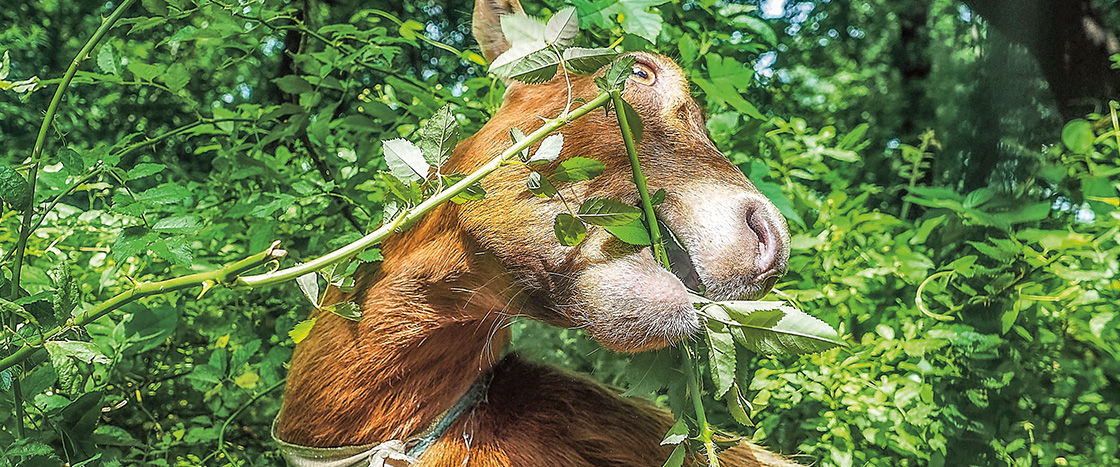DEBRA L ROTHENBERG/SHUTTERSTOCK
Goats eat plants down to their roots over a few weeks, which eventually stops the weeds from growing.
For six weeks this past summer, a goat herd munched on weeds covering a hillside in New York City’s Riverside Park. It’s challenging for workers to climb the steep slope—but not for goats! That’s why the annual Goatham program, which began in 2019, brings in goats from a local farm to eat the weeds. The name is inspired by the city’s nickname, Gotham. Thanks to the goats, staff don’t need to use herbicides, many of which contain toxic chemicals.

